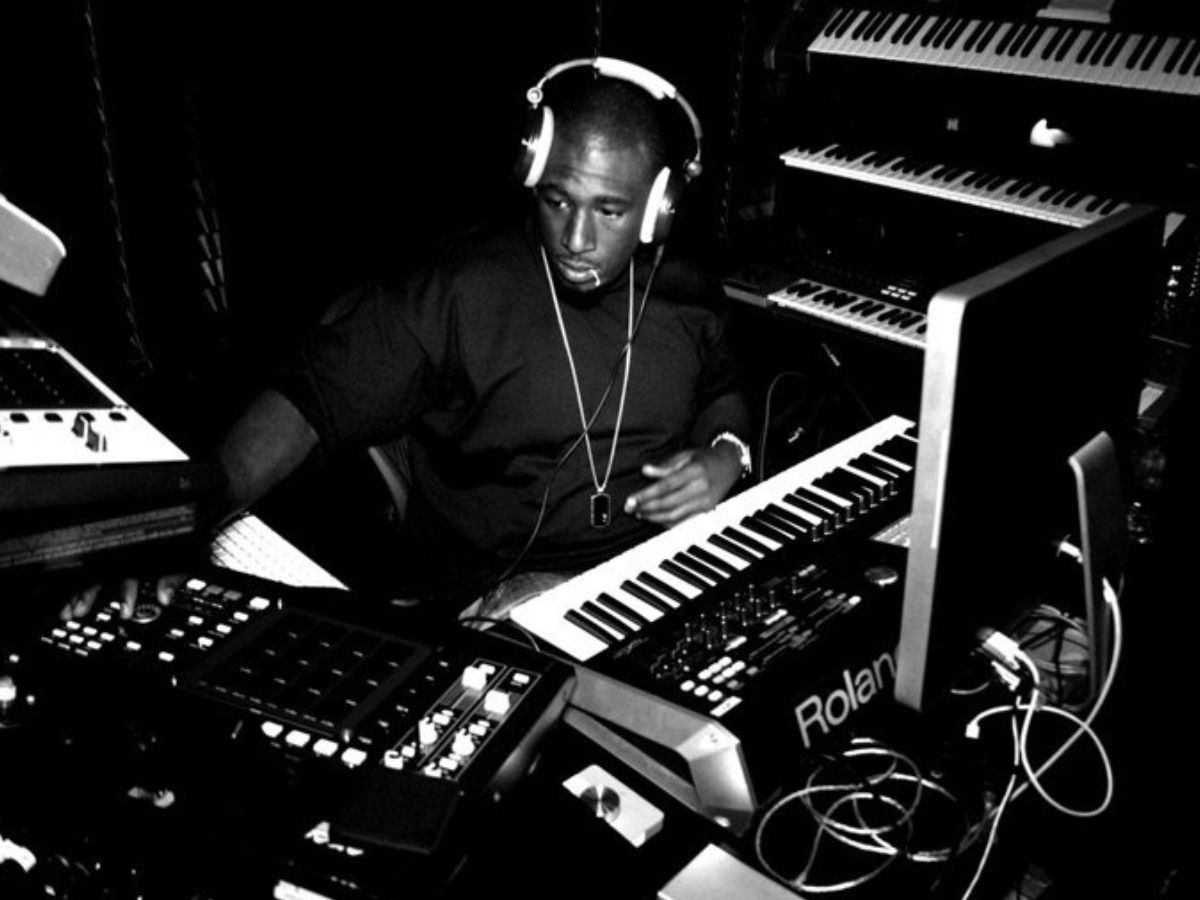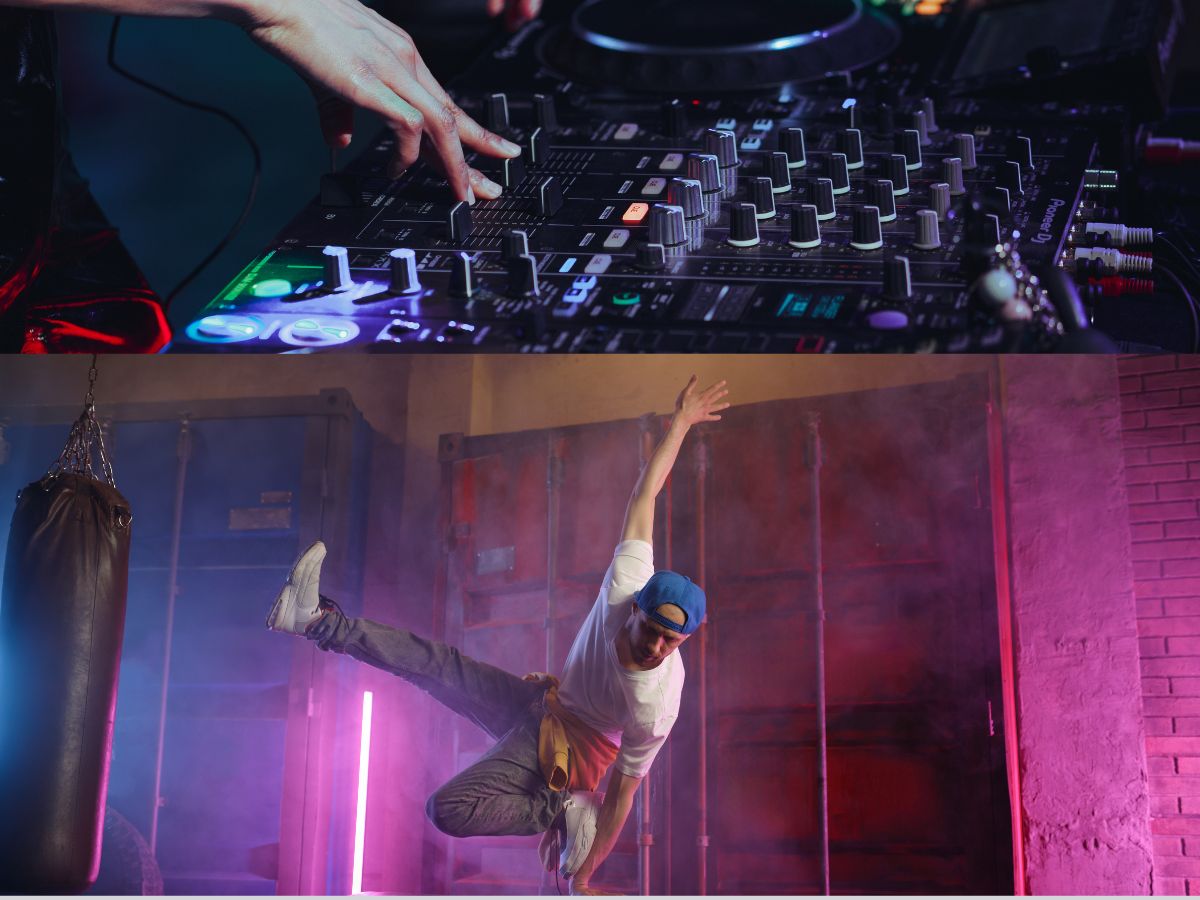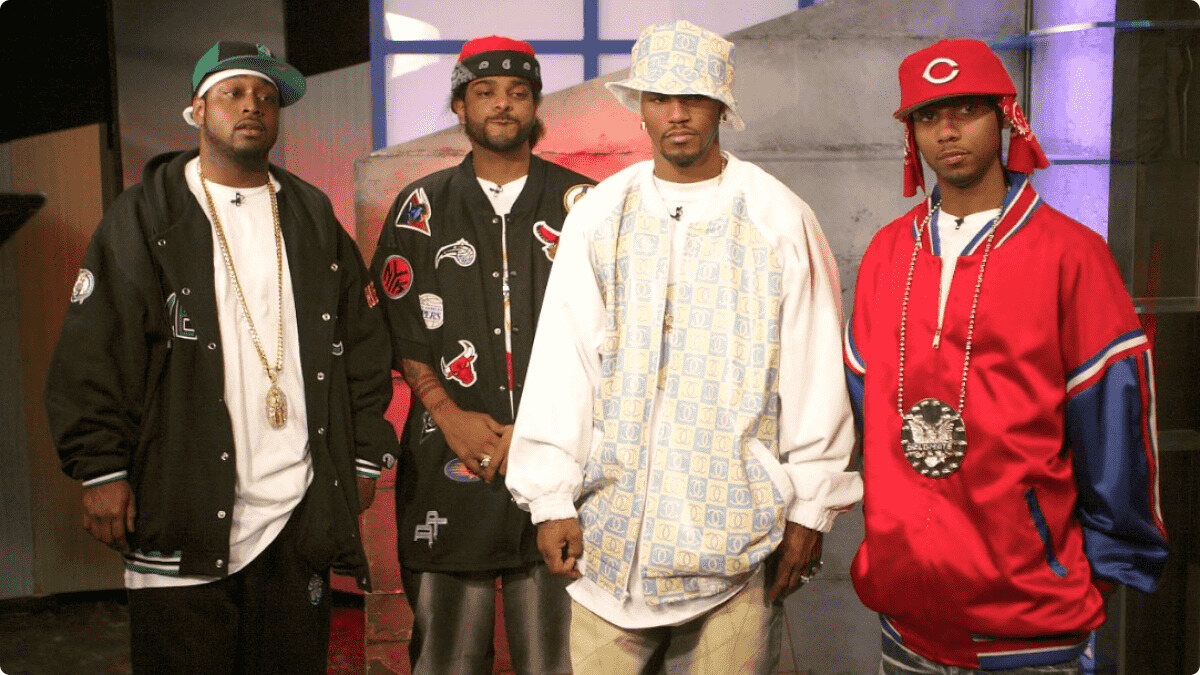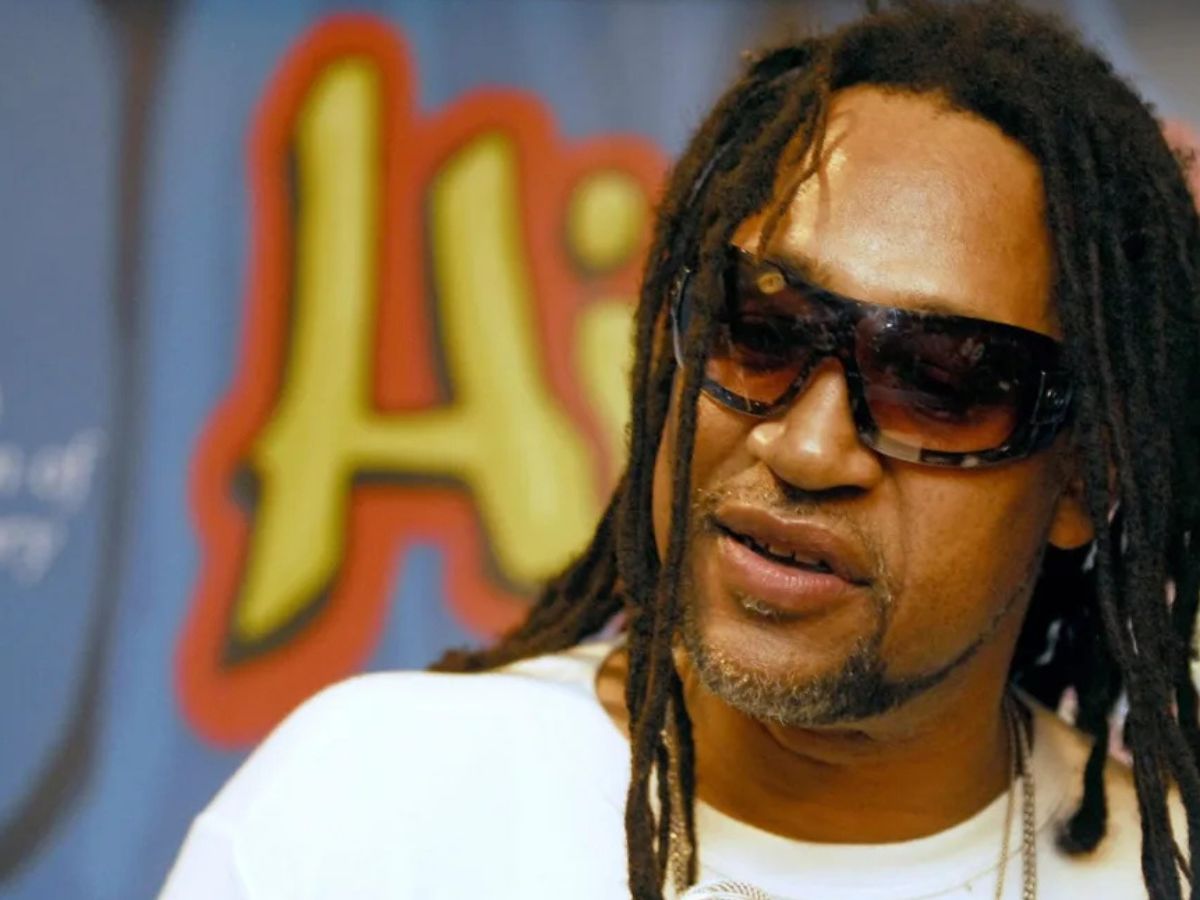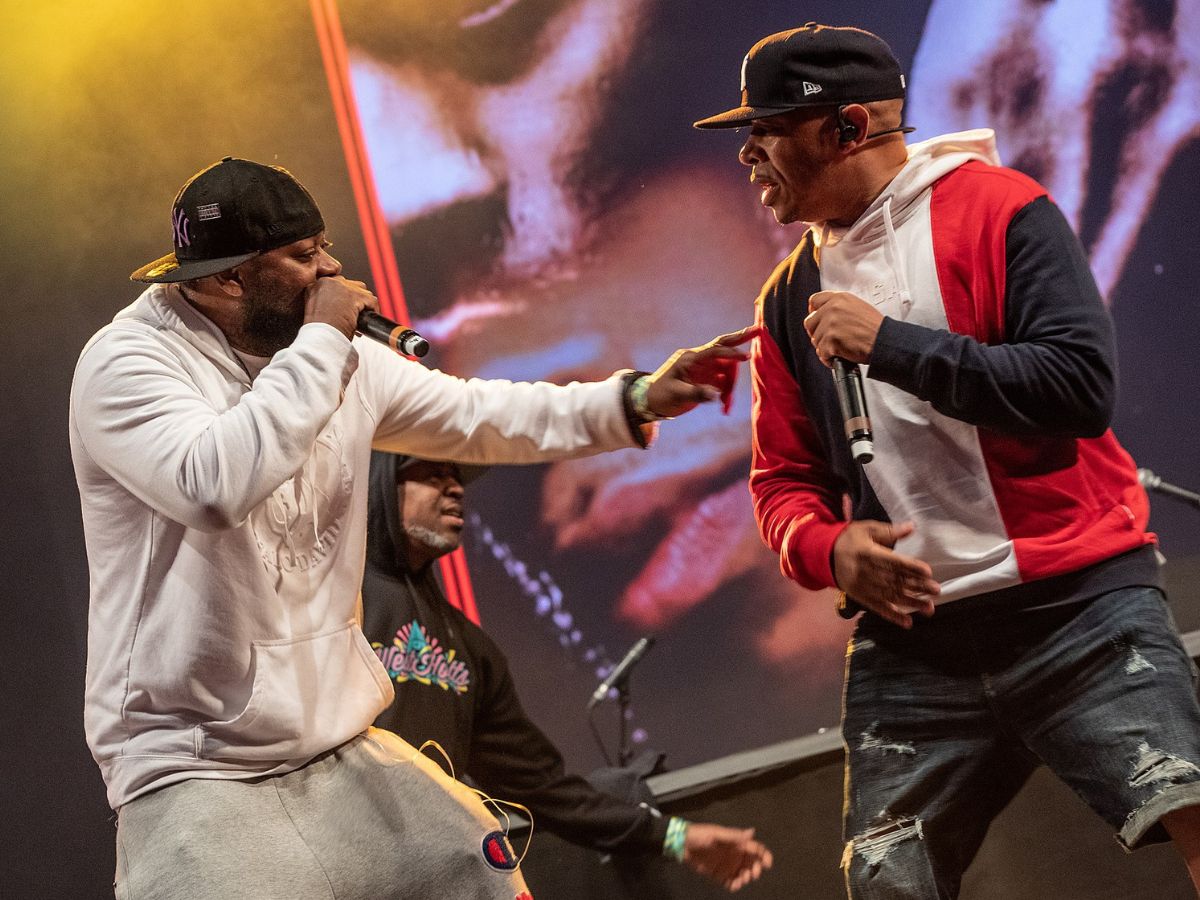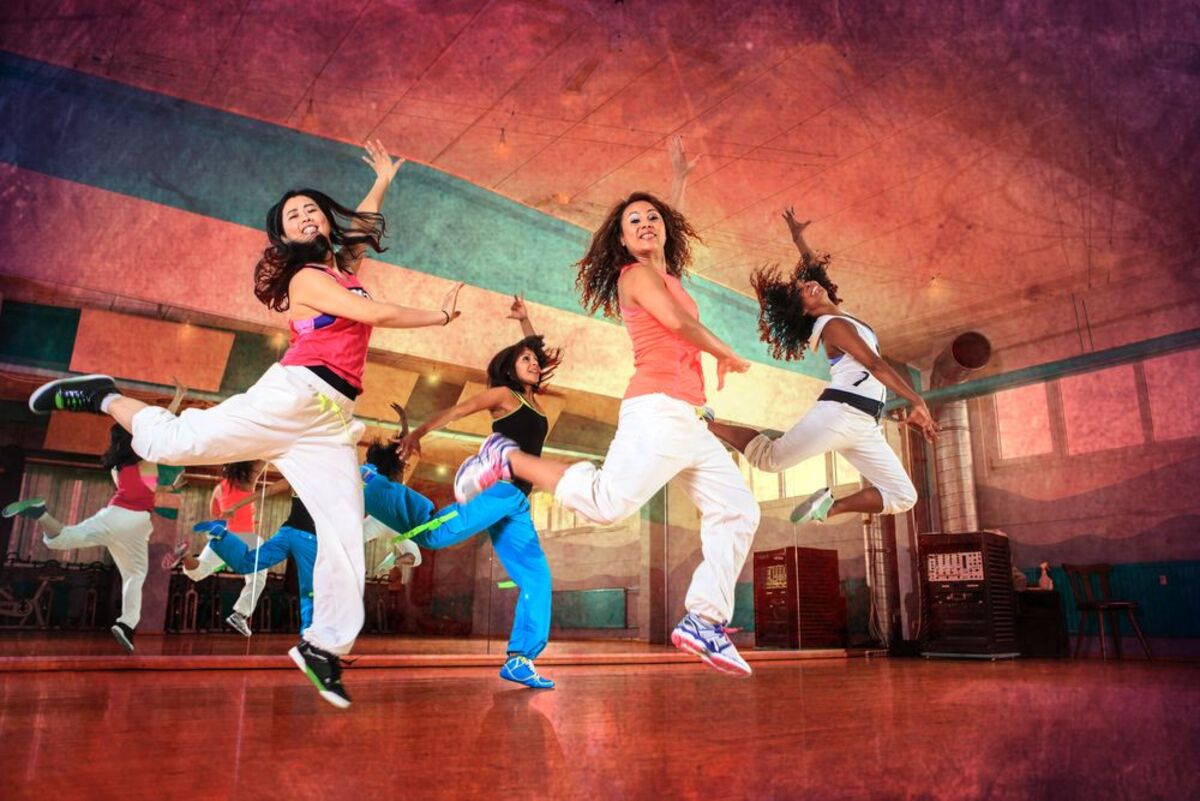

Hip Hop
How To Do Hip Hop Moves
Modified: January 29, 2024
Learn how to do hip hop moves with our easy-to-follow tutorials. Master the art of hip hop dancing and impress your friends on the dance floor.
(Many of the links in this article redirect to a specific reviewed product. Your purchase of these products through affiliate links helps to generate commission for AudioLover.com, at no extra cost. Learn more)
Table of Contents
- Introduction
- The History of Hip Hop Dance
- Getting Started with Hip Hop Moves
- Basic Hip Hop Steps
- Intermediate Hip Hop Moves
- Advanced Hip Hop Choreography
- Tips for Improving Your Hip Hop Skills
- Common Mistakes to Avoid
- Dancewear and Shoes for Hip Hop
- Freestyle Hip Hop Dancing
- Hip Hop Dance Styles and Influences
- Iconic Hip Hop Performances
- Frequently Asked Questions about Hip Hop Moves
- Conclusion
Introduction
Hip hop dance is a vibrant and energetic form of movement rooted in the rhythm and beats of hip hop music. It emerged in the 1970s in the South Bronx, New York City, and has since evolved into a global cultural phenomenon. From its humble beginnings in block parties and street corners, hip hop dance has become a mainstream art form that encompasses a wide range of styles.
What sets hip hop dance apart is its emphasis on self-expression, individuality, and creativity. It is a style that encourages dancers to bring their unique personality and interpretation to the movements. Hip hop dance is not constrained by strict rules or techniques, allowing dancers to freely explore their own style and add personal flair to their performances.
Throughout its history, hip hop dance has been heavily influenced by other dance styles and cultural movements. From African and Caribbean dance to jazz, funk, and even martial arts, hip hop dance is a melting pot of diverse influences. This fusion of styles has given birth to a rich and dynamic vocabulary of moves and choreography.
Whether you’re a beginner looking to learn some basic steps or an experienced dancer wanting to refine your skills, this article will guide you through the world of hip hop dance. We’ll explore the history of hip hop dance, break down fundamental moves, share tips for improvement, and delve into the various styles and influences within hip hop dance. So put on your dancing shoes and get ready to groove to the rhythm of hip hop!
The History of Hip Hop Dance
Hip hop dance originated in the 1970s in the South Bronx, New York City, amidst the growing hip hop music and culture. It was a form of self-expression for young people in marginalized communities, giving them an outlet to share their stories and experiences through movement.
The early days of hip hop dance were characterized by block parties and street performances where DJs would spin records and MCs would rap over beats. These gatherings became the birthplace of breakdancing, also known as b-boying or b-girling. Breakdancing was a dynamic and acrobatic style of dance that incorporated intricate footwork, spins, and freezes.
As hip hop music continued to gain popularity, the dance style evolved and diversified. Alongside breakdancing, other styles emerged, such as popping, locking, and krumping. Popping involves quick muscle contractions and isolations to create sharp movements and pops, while locking incorporates exaggerated arm and hand gestures. Krumping, on the other hand, is a highly energetic and expressive style that originated in the early 2000s and is known for its intense movements and freestyle battles.
Over time, hip hop dance spread beyond the streets of New York and infiltrated the mainstream music industry and popular culture. It became a vital element of music videos, stage performances, and even Hollywood films. Dancers like Michael Jackson, Janet Jackson, and Justin Timberlake incorporated hip hop moves into their routines, further propelling the style’s visibility and influence.
Today, hip hop dance has evolved into a global phenomenon with countless styles and subgenres. From old school hip hop to new wave hip hop, from lyrical hip hop to street jazz fusion, there are endless possibilities for dancers to explore and innovate.
The influence of hip hop dance can also be seen in other dance forms, with choreographers integrating hip hop elements into contemporary, jazz, and even ballet routines. This fusion of styles has created a diverse and ever-evolving dance landscape.
Overall, the history of hip hop dance is a testament to the power of creativity and self-expression. It has transcended social and cultural boundaries and continues to inspire and empower people around the world.
Getting Started with Hip Hop Moves
If you’re eager to jump into the world of hip hop dance, don’t worry – you don’t need to be a professional dancer to get started! Here are some tips to help you begin your journey into learning hip hop moves:
- Find a Beginner’s Class: Look for dance studios or community centers in your area that offer beginner hip hop dance classes. These classes are designed for individuals with little to no dance experience and focus on teaching the fundamentals of hip hop movement.
- Warm-Up and Stretch: Before diving into any dance routine, it’s crucial to warm up your muscles and stretch to prevent injuries. Start with some light cardio exercises like jogging or jumping jacks, and then stretch your entire body, paying special attention to your legs, hips, and arms.
- Watch Online Tutorials: If attending a dance class is not feasible for you, there are plenty of online tutorials and instructional videos available that can guide you through basic hip hop moves. Websites like YouTube offer a vast library of resources to help you learn at your own pace.
- Practice the Basics: Mastering the basic hip hop moves is essential before moving on to more complex choreography. Practice foundational steps like the two-step, body rolls, and the bounce to develop a sense of rhythm and coordination.
- Focus on Musicality: Hip hop dance is inherently tied to the rhythm and beats of the music. As you learn new moves, pay attention to how they synchronize with the music. Focus on hitting the accents and beats to create a visually appealing and cohesive routine.
- Experiment with Freestyle: Don’t be afraid to let loose and freestyle! Freestyling is an essential aspect of hip hop dance that allows you to express your individuality and creativity. Put on your favorite hip hop track and let the music guide your movements.
- Record and Evaluate Yourself: Use your smartphone or a camera to record yourself practicing hip hop moves. Watching the recordings can help you identify areas where you can improve and refine your technique. It’s also a great way to track your progress over time.
Remember, learning hip hop dance is about having fun, expressing yourself, and embracing the hip hop culture. Don’t be too hard on yourself if you don’t get a move right away – practice, stay persistent, and most importantly, enjoy the journey!
Basic Hip Hop Steps
When it comes to hip hop dance, there are several foundational steps that serve as the building blocks for more complex choreography. Here are some of the basic hip hop steps that you can start incorporating into your dance routine:
- Two-Step: The two-step is one of the most fundamental moves in hip hop dance. It involves stepping forward with your right foot, bringing your left foot to meet it, then stepping back with your right foot and bringing your left foot to meet it. The rhythm is usually “step, together, step, together,” and you can add your own style, such as adding a slight bounce or groove.
- Body Roll: The body roll is a smooth and fluid movement that adds flair to your hip hop routine. Start by standing with your feet shoulder-width apart. Begin the roll by pushing your chest forward, followed by arching your back, and finally, tucking your pelvis under. Reverse the motion by tucking your pelvis, arching your back, and pulling your chest back. This move can be done at different speeds and levels of intensity to match the music and showcase your style.
- The Bounce: The bounce is a foundational movement in hip hop that involves bending your knees and bouncing up and down to the rhythm of the music. Create a relaxed and loose bounce by allowing your body to move with the beat. Experiment with different rhythms and variations of the bounce to add your own personal touch.
- Isolations: Isolations are movements that involve isolating specific body parts, such as your head, shoulders, chest, or hips. For example, you can practice shoulder isolations by moving your shoulders up, down, forward, and backward while keeping the rest of your body still. Isolations not only help improve body control but also add dynamics and texture to your dance routine.
- Footwork: Footwork is an essential component of hip hop dance. It involves fast and intricate movements of the feet while maintaining precise rhythm and coordination. Popular footwork moves include the running man, which mimics running in place, and the shuffle, which involves sliding your feet back and forth in a rhythmic manner.
These are just a few examples of basic hip hop steps, but there are many more to explore and incorporate into your dance routine. Remember to start slowly, focus on mastering the technique, and add your own style and personality to make the moves your own. With practice and dedication, you’ll be able to build a strong foundation in hip hop dance and move on to more advanced choreography.
Intermediate Hip Hop Moves
Once you have a solid grasp of the basic hip hop steps, it’s time to level up your dance skills with some intermediate moves. These moves will challenge your coordination, musicality, and style. Here are a few examples of intermediate hip hop moves to add to your repertoire:
- Pop and Lock Combinations: Building on the foundation of popping and locking, you can start combining different isolations, hits, and freezes to create intricate and visually impressive sequences. Experiment with different body parts and rhythms to create your own unique combinations.
- Breaking Techniques: Take your breakdancing skills to the next level by incorporating more advanced moves like windmills, flares, and headspins. These dynamic and acrobatic moves require strength, flexibility, and practice. It’s important to learn these techniques under the guidance of a trained instructor to ensure safety.
- Footwork Variations: Expand your footwork repertoire by exploring different variations and styles. Try incorporating intricate footwork patterns, quick transitions, and syncopated rhythms into your routines. Experiment with moves like the 6-step, swipes, and footwork freezes to add complexity and creativity to your choreography.
- Body Waves: Body waves are smooth and flowing movements that travel through different parts of your body, creating a wave-like motion. Practice waves from your head to your toes, isolating each section and creating a seamless wave effect. Combine different types of waves, such as arm waves, chest waves, and leg waves, to create visually stunning sequences.
- Floorwork: Explore the art of dancing on the floor with floorwork moves. Rolls, slides, and transitions on the ground can add a dynamic and dramatic element to your routine. Be sure to practice floorwork in a safe and padded environment to prevent any injuries.
As you delve into intermediate hip hop moves, remember to focus on precision, musicality, and expression. Try to infuse your own style and personality into each move, making it unique to you. Additionally, take the time to study and learn from other hip hop dancers who inspire you. Watch performances, attend workshops, and immerse yourself in the hip hop dance community to gain new insights and techniques.
Continual practice and dedication are crucial when tackling intermediate moves. Be patient with yourself as you work to master these more complex dance sequences. With time and perseverance, you’ll progressively become more proficient and confident in your intermediate hip hop dancing abilities.
Advanced Hip Hop Choreography
For those who have mastered the intermediate hip hop moves and are hungry for a greater challenge, advanced hip hop choreography offers a platform to truly showcase your skills and creativity. Advanced choreography pushes the boundaries of hip hop dance and demands a high level of technical proficiency, musicality, and storytelling. Here are some characteristics and tips for creating and executing advanced hip hop choreography:
Complex Movement Sequences: Advanced choreography often includes intricate and complex movement sequences that require seamless transitions, sharp hits, and precise timing. Incorporate a variety of footwork patterns, isolations, and dynamic freezes to challenge yourself and engage the audience.
Musicality and Musical Interpretation: Advanced hip hop choreography goes beyond just executing moves; it involves deeply understanding and interpreting the music. Develop a keen sense of musicality by listening closely to the beats, accents, and nuances of the music. Let the music guide your movements and use it as a tool for storytelling and emotional expression.
Incorporation of Different Styles: Advanced hip hop choreography often integrates elements from other dance styles, such as jazz, contemporary, or even classical dance. Experiment with fusion movements and stylistic contrasts to add depth and complexity to your choreography. However, ensure that the essence of hip hop remains at the core of your routine.
Exploration of Concepts and Themes: Advanced choreography provides an opportunity to explore deeper concepts and themes. Use dance as a means of storytelling to convey messages, emotions, or social commentary. Develop narratives and explore character dynamics to create a more immersive and impactful experience.
Group Dynamics and Partnering: Advanced hip hop choreography often involves intricate group formations, synchronized movements, and partner work. Develop a strong understanding of group dynamics, spacing, and timing to create visually captivating and cohesive routines. When partnering, focus on trust, communication, and mutual coordination to execute complex lifts, flips, and interaction.
Continual Learning and Inspiration: Advanced hip hop choreography requires a commitment to continually broaden your dance knowledge and seek inspiration from various sources. Attend workshops, take classes with different instructors, and learn from experienced dancers. Watch performances by renowned choreographers and explore the rich history and evolution of hip hop dance to inform your own choreographic choices.
Remember, advanced hip hop choreography is an ongoing journey of growth and exploration. Embrace the challenges and embrace the opportunity to push your boundaries and evolve as a dancer. Keep refining your technique, exploring new styles, and experimenting with different concepts to create innovative and captivating routines that truly showcase your unique voice and artistry.
Tips for Improving Your Hip Hop Skills
Hip hop dance is a constantly evolving art form, and there’s always room for improvement and growth. Whether you’re a beginner or an experienced dancer, here are some tips to help you enhance your hip hop skills:
- Take Regular Classes: Enroll in regular hip hop dance classes to receive professional guidance and instruction. A qualified dance teacher can provide valuable feedback, correct your technique, and introduce you to new choreography and styles.
- Practice Consistently: The key to improvement in any dance style is consistent practice. Set aside dedicated practice time each week to reinforce the moves, improve your coordination, and build muscle memory. Practice regularly to develop flexibility, strength, and stamina.
- Focus on Fundamentals: Mastering the fundamentals is essential for growth in hip hop dance. Continue to refine your basic steps, such as the two-step, body rolls, and footwork, as they serve as the foundation for more advanced moves and routines.
- Record Yourself: Use a camera or smartphone to record yourself while practicing. Review the recordings to identify areas where you can improve your technique, musicality, and performance quality. Take note of any areas that need refinement and make adjustments accordingly.
- Expand Your Vocabulary: Don’t limit yourself to just one style or choreographer. Explore different hip hop styles, such as old school, new wave, or street jazz fusion. Study the work of different choreographers and expose yourself to diverse influences to expand your movement vocabulary.
- Attend Workshops and Dance Intensives: For a more immersive learning experience, attend workshops and dance intensives taught by experienced professionals. These events provide an opportunity to learn from industry experts, gain new perspectives, and challenge yourself in a supportive environment.
- Seek Inspiration: Watch performances by accomplished hip hop dancers and choreographers. Immerse yourself in hip hop culture by exploring music videos, dance battles, and live performances. Study the works of renowned artists and draw inspiration from their style, musicality, and stage presence.
- Embrace Freestyle: Freestyle dancing is an integral part of hip hop culture. Set aside time to freestyle and express yourself through movement. Experiment with different rhythms, explore new moves, and let your creativity flow. Freestyling will help you develop your personal style and improve your improvisational skills.
- Stay Open to Feedback: Be open to receiving feedback from instructors, peers, and even yourself. Constructive criticism is essential for growth and improvement. Take feedback as an opportunity to learn and grow, and use it to refine your technique, performance quality, and artistic expression.
Remember, becoming a skilled hip hop dancer takes time and dedication. Stay patient, enjoy the process, and celebrate your progress along the way. With consistent practice and a passion for the art form, you’ll continue to evolve and refine your hip hop skills.
Common Mistakes to Avoid
As you navigate your hip hop dance journey, it’s important to be aware of common mistakes that can hinder your progress and performance. By avoiding these mistakes, you can enhance your skills and ensure that you’re delivering your best dance. Here are some common pitfalls to watch out for:
- Neglecting the Basics: Skipping over the fundamentals of hip hop dance can limit your growth and affect your overall technique. Make sure to dedicate time to master basic steps, body isolations, and foundational movements to build a strong dance foundation.
- Lack of Musicality: Hip hop dance is deeply intertwined with the music. Failing to connect your movements to the rhythm, beats, and lyrics can result in a disconnected and unengaging performance. Work on developing your musicality by practicing groove exercises and closely listening to the music.
- Poor Posture and Technique: Maintaining proper posture and technique is crucial for executing hip hop moves effectively and preventing injuries. Avoid slouching, keep your core engaged, and focus on alignment to ensure clean movements and minimize strain on your body.
- Copying Rather Than Incorporating: While it’s inspiring to learn from other dancers, it’s important to add your own unique style and personality to your movements. Avoid merely copying choreography without bringing your own interpretation and individuality. Take the time to personalize the moves and make them your own.
- Lack of Confidence: Confidence is key in hip hop dance. Avoid second-guessing yourself and doubting your abilities. Embrace your individuality and let go of any self-consciousness. Trust in your training and believe in your skills to perform with confidence and charisma.
- Forgetting to Freestyle: Freestyling is an essential aspect of hip hop dance that allows you to improvise and express yourself. Don’t overlook the importance of freestyling as it helps improve your creativity, musicality, and ability to adapt to different rhythms and styles.
- Ignoring Body Conditioning: Hip hop dance requires strength, flexibility, and endurance. Neglecting to condition your body can lead to injuries and performance limitations. Incorporate strength training, stretching, and cardio exercises into your routine to improve your overall dance fitness.
- Not Seeking Feedback: Feedback is invaluable for growth and improvement. Avoid the mistake of not seeking feedback from instructors, peers, or mentors. Embrace constructive criticism as an opportunity to learn, refine your technique, and expand your artistic expression.
By being mindful of these common mistakes and actively working to avoid them, you’ll be better equipped to elevate your hip hop dance skills. Remember, dance is a continuous learning process, and even the most experienced dancers constantly strive for improvement.
Dancewear and Shoes for Hip Hop
When it comes to hip hop dance, your choice of dancewear and shoes plays a crucial role in your comfort, mobility, and overall performance. Here are some key considerations when selecting dancewear and shoes for hip hop:
Dancewear:
– Comfort and flexibility are key. Opt for clothing that allows for a full range of motion and doesn’t restrict your movements. Look for breathable fabrics that wick away sweat to keep you cool during intense dance sessions.
– Choose clothing that reflects your personal style and suits the vibe of hip hop. Many dancers opt for loose or fitted t-shirts, tank tops, sweatshirts, hoodies, joggers, leggings, or baggy pants.
– Layers can be useful for warming up or adding style to your outfit. Consider wearing a dance jacket or layering a flannel shirt over your top.
– Accessories like hats, headbands, wristbands, and bandanas can add flair and personality to your hip hop look.
Shoes:
– Selecting the right shoes is essential for both comfort and performance in hip hop dance. Look for sneakers that provide adequate support, cushioning, and stability. Avoid shoes with heavy treads or thick soles that may hinder your footwork and mobility.
– Opt for shoes with flexible soles that allow for easy movement and pivoting. Shoes with rubber or suede soles provide good traction on smooth dance floors.
– High-top sneakers are popular among hip hop dancers as they provide ankle support and stability during quick movements and jumps. However, low-top sneakers can also be suitable as long as they offer the necessary support and flexibility.
– Choose shoes that reflect your personal style and match your dance attire. Many dancers prefer sneakers with bold colors, patterns, or unique designs to make a statement.
Additional Considerations:
– Always ensure that your dancewear and shoes are clean and well-maintained. Regularly check for any signs of wear and tear to avoid accidents or injuries.
– It can be helpful to have separate dance shoes that are designated for indoor use only. This helps keep the soles clean and ensures good traction on dance floors.
– Don’t be afraid to try different brands and styles of dancewear and shoes to find what works best for you. Everyone’s preferences and needs may vary, so it’s important to find the right fit and comfort for your individual dance journey.
Remember, while dancewear and shoes are important for hip hop dance, it’s ultimately your passion, skill, and style that will make your performance stand out. Use your outfit as a way to express your personality and bring your unique flavor to the dance floor!
Freestyle Hip Hop Dancing
Freestyle hip hop dancing is an essential aspect of hip hop culture that allows for improvisation, self-expression, and creativity. Unlike choreographed routines, freestyle dance is spontaneous and allows dancers to truly showcase their unique style and interpretation of the music. Here are some key aspects and tips to consider when engaging in freestyle hip hop dancing:
Dance to the Music:
– Freestyle hip hop is all about moving in sync with the music. Listen carefully to the rhythm, beats, and lyrics to connect your movements with the music. Allow the music to inspire and guide your dance, letting it dictate the flow and energy of your freestyle.
– Experiment with different musical genres within hip hop, such as old school, new wave, trap, or funk. Each style of music will evoke different emotions and rhythms, enabling you to explore various movement dynamics in your freestyle.
Develop Your Style:
– Embrace your individuality and develop your own unique style of dance. Freestyle offers a platform to showcase your personal flair, attitude, and creativity. Don’t be afraid to take risks and try new movements that feel natural to your body.
– Take inspiration from other dancers and choreographers, but avoid mimicking their exact moves. Use their technique and style as a foundation to build upon, adding your own twists and variations.
Experiment with Moves and Transitions:
– Freestyle dance allows you to experiment with a wide range of moves and transitions. Incorporate different elements of hip hop, such as footwork, isolations, body waves, freezes, and floorwork, to create a diverse and dynamic freestyle.
– Focus on seamless transitions between moves, allowing your dance to flow smoothly from one movement to the next. Effortlessly connecting your various movements will help maintain the overall energy and cohesiveness of your freestyle.
Practice Freestyle Battles:
– Engaging in freestyle battles is a great way to challenge yourself and test your skills in a competitive environment. Freestyle battles allow you to showcase your improvisation skills and exchange moves with other dancers.
– When participating in freestyle battles, remember to stay respectful and supportive of your opponents. The objective is to have fun, inspire one another, and push the boundaries of your own dancing abilities.
Record and Evaluate:
– Record your freestyle sessions to observe your progress and analyze your movements. Watch these recordings to identify areas where you can improve or expand your repertoire of moves.
– Self-reflection is important in freestyle hip hop dancing. Take note of your strengths and areas where you want to see growth. Continually challenge yourself to push beyond your comfort zone and try new techniques or styles.
Freestyle hip hop dancing is an empowering and liberating form of expression. It allows you to connect with the music, showcase your originality, and explore the artistry of hip hop dance. Embrace the freedom and spontaneity of freestyle, and let your body and the music guide your movements on the dance floor.
Hip Hop Dance Styles and Influences
Hip hop dance is a rich and diverse art form that encompasses a wide range of dance styles and influences. From its origins in the streets of New York City, hip hop dance has evolved and branched out, incorporating various elements from different cultures and dance genres. Here are some prominent hip hop dance styles and their influential factors:
Breaking:
– Breaking, also known as b-boying or b-girling, emerged as one of the foundational styles of hip hop dance. It originated in the 1970s in the Bronx, New York, and was heavily influenced by martial arts, gymnastics, and acrobatics. Breaking consists of dynamic footwork, freezes, power moves, and intricate floorwork.
Popping and Locking:
– Popping and locking are two distinct styles within hip hop dance that emerged in the 1970s and gained popularity on the West Coast. Popping involves quick muscle contractions and isolations to create robotic and mechanical movements. Locking, on the other hand, incorporates exaggerated arm and hand gestures, along with funky footwork and locking positions.
Krumping:
– Krumping is a highly energetic and expressive style of hip hop dance that originated in Los Angeles during the early 2000s. It is characterized by fast, aggressive movements, intense facial expressions, and freestyle battles. Krumping draws influences from African and Caribbean dance, as well as martial arts, and serves as an outlet for self-expression and emotional release.
Street Jazz:
– Street jazz is a fusion of hip hop and jazz dance styles. It combines the technical elements of jazz dance, such as turns, jumps, and extensions, with the urban and freestyle movements of hip hop. Street jazz often incorporates elements from other dance genres like contemporary, breaking, and popping, resulting in a dynamic and versatile style.
Commercial Hip Hop:
– Commercial hip hop refers to the style of dance commonly seen in music videos, stage performances, and commercial productions. It encompasses various elements of hip hop, popping, locking, and contemporary dance, but is often stylized and choreographed to suit the demands of the music industry and entertainment world.
Fusion Styles:
– Hip hop dance has had a significant influence on many other dance genres, leading to the development of fusion styles. Contemporary hip hop blends techniques from contemporary dance with hip hop movements and musicality. Jazz-funk incorporates jazz dance elements with the swag and groove of hip hop. Housedance fuses house music with hip hop footwork and isolations.
These are just a few examples of the many hip hop dance styles and their influences. As hip hop evolves, dancers continue to push the boundaries and incorporate elements from different cultures, dance genres, and street styles. The diversity within hip hop dance allows for endless possibilities and creative expression, making it an ever-evolving and vibrant art form.
Iconic Hip Hop Performances
The history of hip hop is filled with memorable and groundbreaking performances that have left an indelible mark on the music and dance industry. These iconic performances have showcased the artistry, skill, and cultural significance of hip hop. Here are a few standout moments that have shaped the legacy of hip hop:
Michael Jackson – “Billie Jean” Motown 25 (1983):
– Michael Jackson’s performance of “Billie Jean” during the Motown 25 special is considered one of the most iconic moments in music and dance history. His electrifying dance moves, including the unforgettable moonwalk, captivated the audience and solidified him as the King of Pop. This performance not only showcased Jackson’s incredible talent but also brought hip hop dance elements to the mainstream.
Run-DMC and Aerosmith – “Walk This Way” (1986):
– The collaboration between hip hop group Run-DMC and rock band Aerosmith on the song “Walk This Way” brought together two different musical genres and introduced hip hop to a wider audience. Their energetic and groundbreaking performance at the 1986 Grammy Awards broke barriers and set a precedent for future collaborations between hip hop and rock music.
Madonna – “Vogue” MTV VMAs (1990):
– Madonna’s performance of “Vogue” at the 1990 MTV Video Music Awards was a celebration of the underground ballroom culture and its influence on the mainstream. The performance featured elements of vogueing, a dance style developed within the LGBTQ+ community, and brought it to a global stage. Madonna’s performance not only popularized the dance form but also celebrated the diverse identities and creativity within the hip hop community.
Janet Jackson – “Rhythm Nation” (1990):
– Janet Jackson’s “Rhythm Nation” performance showcased her innovative choreography and social commentary. The performance, with its synchronized dancers and powerful moves, emphasized the message of unity, racial harmony, and justice. It became an iconic symbol of empowerment and cemented Jackson’s status as one of the most influential artists in hip hop and pop culture.
Beyoncé – Coachella (2018):
– Beyoncé’s headlining performance at the 2018 Coachella Valley Music and Arts Festival, commonly referred to as Beychella, was a tour de force that celebrated black culture, female empowerment, and the history of HBCUs (Historically Black Colleges and Universities). The performance featured a diverse array of dance styles, including hip hop, stepping, and majorette routines. Beyoncé’s electrifying stage presence, meticulous choreography, and tribute to black excellence made this performance a defining moment in hip hop history.
These iconic performances have not only entertained audiences but also pushed boundaries, sparked social change, and elevated the artistry and impact of hip hop. They serve as a testament to the power of music, dance, and creativity, and continue to inspire performers and fans alike, shaping the future of hip hop for generations to come.
Frequently Asked Questions about Hip Hop Moves
When it comes to hip hop dance, there are often questions that arise regarding the moves, techniques, and overall experience. Here are some frequently asked questions and their answers to help you navigate the world of hip hop moves:
1. What are the basic hip hop moves that every beginner should learn?
Basic hip hop moves that every beginner should learn include the two-step, body rolls, the bounce, isolations, and footwork variations. These moves serve as the foundation for more complex choreography and allow you to develop rhythm and coordination.
2. How can I improve my freestyle dancing skills?
Improving your freestyle dancing skills comes with practice and experimentation. Listen to a variety of hip hop music, focus on musicality, explore different movements, and let go of self-consciousness. Embrace your individuality, trust your instincts, and let the music guide your improvisation.
3. How long does it take to become proficient in hip hop dance?
The time it takes to become proficient in hip hop dance varies depending on individual commitment and practice. With regular classes, consistent practice, and dedication, beginners can develop a solid foundation within a few months. However, mastery of hip hop dance is an ongoing journey that evolves over time as you continue to learn and refine your skills.
4. Can I learn hip hop dance at any age?
Absolutely! Hip hop dance can be learned at any age. Many dance studios offer classes for different age groups, including adults. Whether you’re a child, teenager, or adult, it’s never too late to start learning and enjoying hip hop dance.
5. Do I need to be flexible to do hip hop dance?
While flexibility can be beneficial, it is not a requirement to do hip hop dance. Hip hop dance focuses more on rhythm, musicality, and style. However, regular stretching can help improve your range of motion and execution of certain dance moves.
6. What should I wear to a hip hop dance class?
Wear comfortable clothing that allows for ease of movement, such as t-shirts, tank tops, sweatshirts, hoodies, joggers, leggings, or baggy pants. Choose shoes that provide support and flexibility, such as sneakers with rubber or suede soles.
7. Can I incorporate other dance styles into hip hop?
Absolutely! Hip hop dance is known for its fusion and versatility. Many dancers incorporate elements from other dance styles like jazz, contemporary, ballet, or even traditional ethnic dances. Experimenting with different styles helps add depth and originality to your hip hop choreography.
8. Is it important to take formal hip hop dance classes?
While not mandatory, formal hip hop dance classes can be highly beneficial. Classes provide structured training, professional guidance, and an opportunity to learn proper technique. Instructors can also provide valuable feedback and help you progress faster.
9. How can I develop my own style in hip hop dance?
Developing your own style in hip hop dance comes with time and exploration. Study the styles of different dancers and choreographers, practice regularly, and focus on expressing your individuality. Incorporate your personal experiences, influences, and emotions into your movements to create a unique style that reflects who you are as a dancer.
Remember, the journey of learning hip hop dance is a rewarding and fulfilling experience. Don’t hesitate to ask questions, seek guidance from instructors, and enjoy the process of developing your skills and artistry in this vibrant and dynamic dance form.
Conclusion
Hip hop dance is a powerful and influential art form that has captivated audiences around the world. From its humble beginnings in the streets of New York City to its global reach today, hip hop dance continues to evolve and push boundaries. Whether you’re a beginner taking your first steps or an experienced dancer honing your skills, hip hop dance offers a world of creativity, self-expression, and cultural connection.
In this article, we’ve explored the history of hip hop dance, discussed various styles and influences, and provided tips for improving your skills. We’ve delved into the world of basic steps, intermediate moves, and advanced choreography, highlighting the importance of musicality, technique, and individuality. We’ve also discussed the significance of freestyle dancing, the importance of dancewear and shoes, and the impact of iconic hip hop performances. Additionally, we’ve touched on frequently asked questions to address common concerns and provide guidance.
As you continue your hip hop dance journey, remember to embrace the essence of hip hop culture – self-expression, creativity, and unity. Allow the music to guide your movements, tell your own story through dance, and celebrate the diverse influences that shape the art form. Keep learning, practicing, and pushing yourself to grow as a dancer, while staying true to your unique style and voice.
Hip hop dance is a testament to the power of music, movement, and community. It has the ability to inspire, uplift, and bring people together from all walks of life. So, put on your dancing shoes, tune into the rhythm, and let the beat lead you on an incredible journey through the vibrant world of hip hop dance!

